Our critical listening audio rooms are complicated creatures and difficult to figure out in what is causing the issue and what type of treatment is required to fix the issues. We can build a new room or analyze and treat an existing space. At Acoustic Fields we have a room analysis tab that will send you to our free room form service. This tab will ask you for information about your room. https://www.acousticfields.com/free-room-analysis/.You will give us dimensions along with the type of material the room is made from, what you are doing within the room and a host of other variables we will need to determine the issues within your room. The room form also allows you to attach up to 4 pictures of your room. Stand in the middle of the room and take a picture of each wall surface area. Try and include some of the ceiling in at least one of the pictures. We are an acoustic design company that builds and treats rooms for critical audio listening. We build home theaters, two channel listening rooms along with professional live rooms, control rooms and vocal spaces. You can read about us at Acoustic Fields showing our design services with our full product line: https://www.acousticfields.com/about/ Let’s take a look at some customer rooms and discuss the do’s and don’ts we see in the pictures.
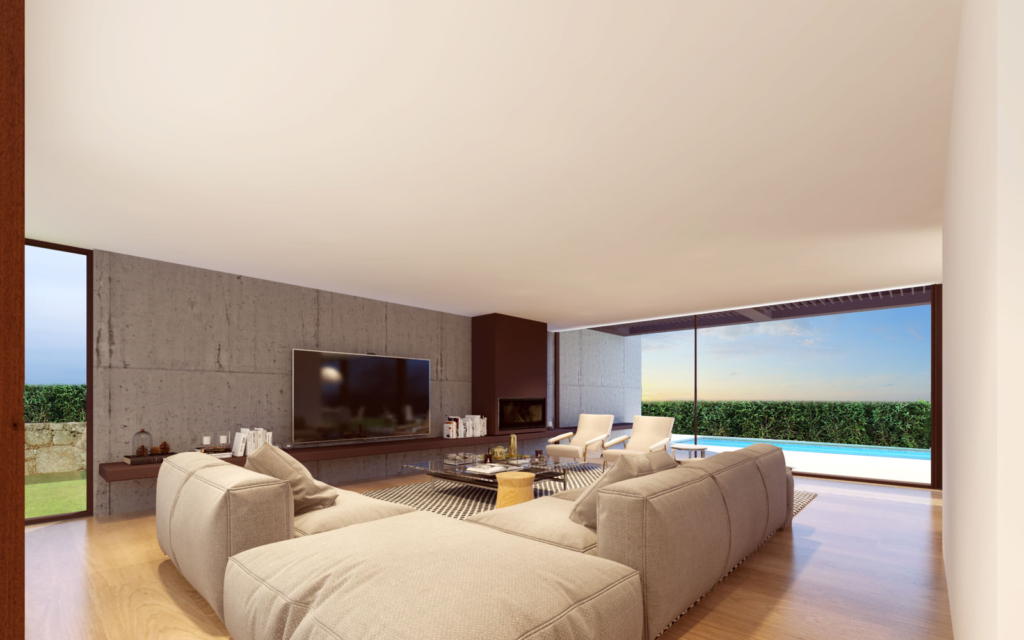
In the title photo above, we see that we have a room that looks but will not sound. Every surface within the room is anti-sound. It’s hard surfaces make a highly reflected environment and reflections from all the hard surfaces will accumulate and form a reverberation barrier to a higher than average speech intelligibility ratio. A speech intelligibility ratio is how many words of dialogue you can hear within a sentence of spoken words. http://www.mcsquared.com/speech.htm. Reflections from the wall surfaces produce energy that stays around longer within the room after it is spoken or played. It’s the sound hang time from reflections that stops us from hearing words spoken within our rooms. https://en.wikipedia.org/wiki/Reverberation In all critical listening environments, there must be a balance of absorption surface areas to offset the hard surface areas that produce reflections. To calculate reverberation times, you must add up all the reflections from the offending surface areas. Every wall, floor, or ceiling surface area contributes approximately 17% to the total issue. This is why you must treat multiple surface areas before you have an audio impact.

In the photo below, you can see that we have chairs positioned directly in front of the speakers. We also have speakers close to the sidewalls along with a large screen between the speakers. There is clutter everywhere within this room. Remember the area behind, between, and the area from the speakers to the listening position must be free of clutter. We have three sets of reflections that must be managed from our speakers to the listening position. We have the primary reflection which occurs from energy striking the closest room boundary surface. That primary reflection then travels across the room in front of the listening position and strikes the opposite sidewall. The tertiary reflection is the secondary reflection headed back to its original wall. All three of these reflections contribute to the soundstage we are trying to create with two speakers. The direct energy or straight line energy from the speakers to the listening position is the purest sound we will get. The primary, secondary, and tertiary reflections mix with the direct sound and the four of them must all work together in the same time domain. This improper positioning along with no treatment on the front and sidewalls means that you are only hearing about 35 % of what the system is capable of producing.
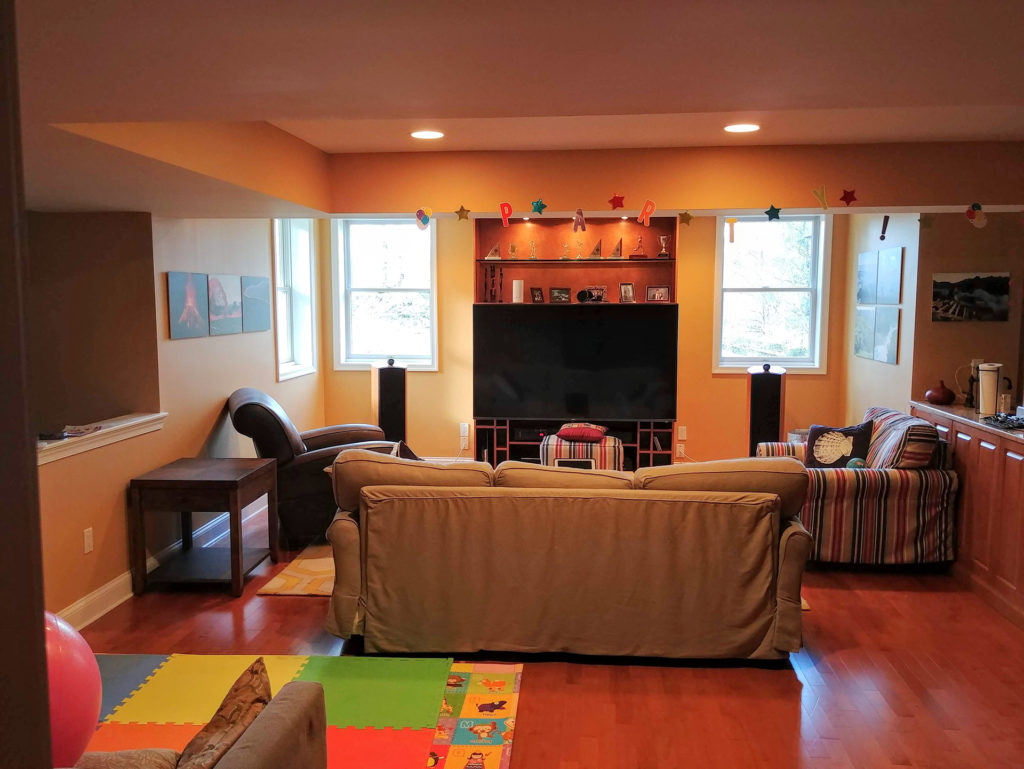
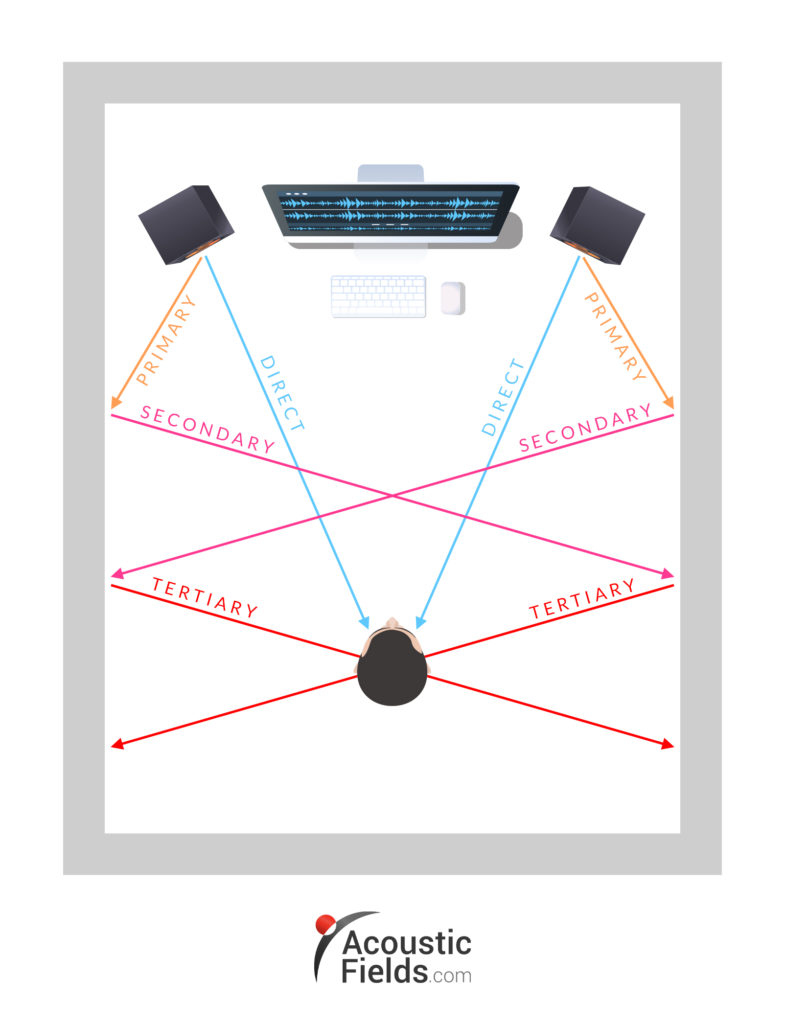
In the photo below, you can see that the rear of this listening room is a kitchen. You can also see that there are a few panels placed at the ceiling and kitchen intersect. Sound from the speakers leaves the speakers and goes through the listening position and ends up in the kitchen. The kitchen is composed of hard surfaces and will produce its own reverberation times. The kitchen will now act as a speaker producing a harsh and brittle sound quality along with resonances that are determined by the dimensions of the kitchen. Placing panels along the ceiling will not do anything to deal with this setup issue. You must first have enough square footage of coverage that you can treat or absorb the excess energy produced by the kitchen hard surfaces. When it comes to managing reflections from hard surfaces it is all about having enough square footage of coverage to treat the reverberation times produced by the kitchen. Unfortunately, there are no available surface areas to treat in the kitchen.
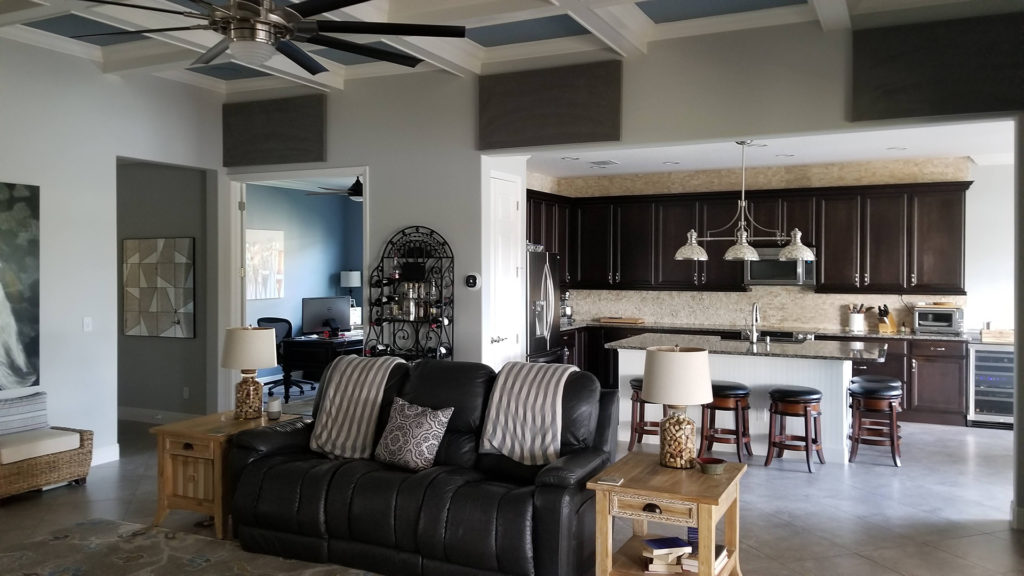
In the photo below, we see a common set up issue. Rooms have recessed areas that people like to place sound generating devices within. They place speakers and subwoofers in places that offer the most convenience, not the necessary acoustical requirements of the room. Placing a sound generating device within an alcove or room recess means that the alcove becomes its own room. The dimensions of the alcove determines the sound quality and the distortion level. In this picture, we have a subwoofer placed within a recessed area and close to the corner of that area which only compounds the distortion levels within that area. The alcove now becomes a resonating chamber that will produce low-frequency distortion and it will be heard within the room. Our goal in acoustics is to do no harm. With this set up, we are producing more room distortion when our goal should be to produce less distortion.
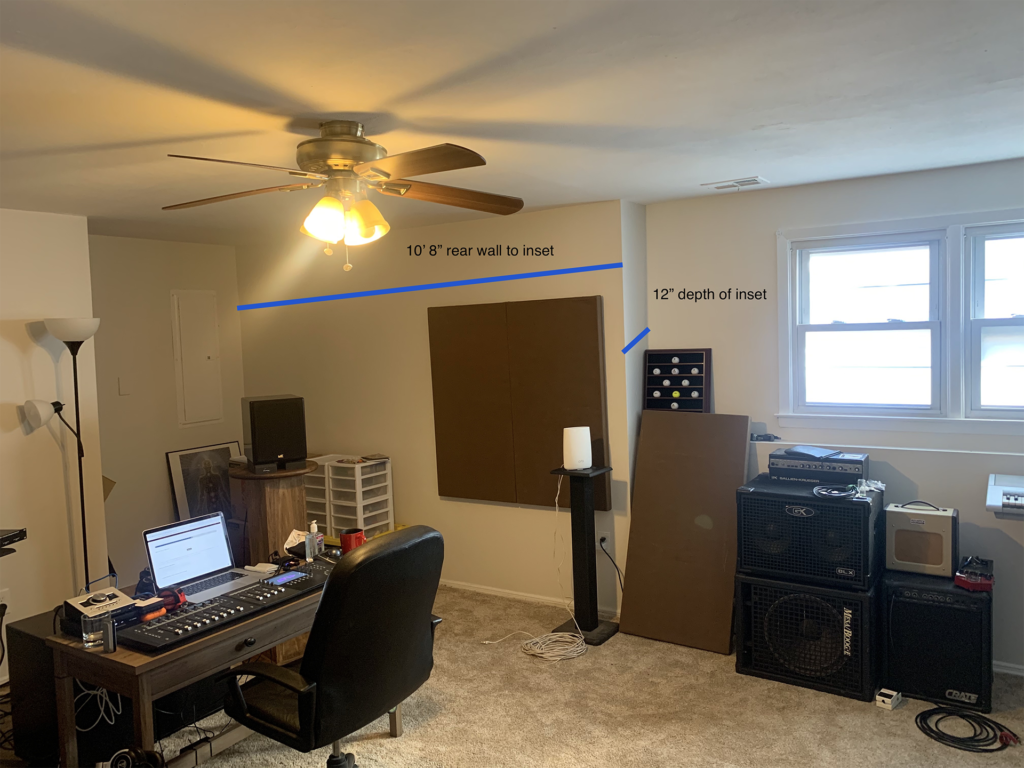


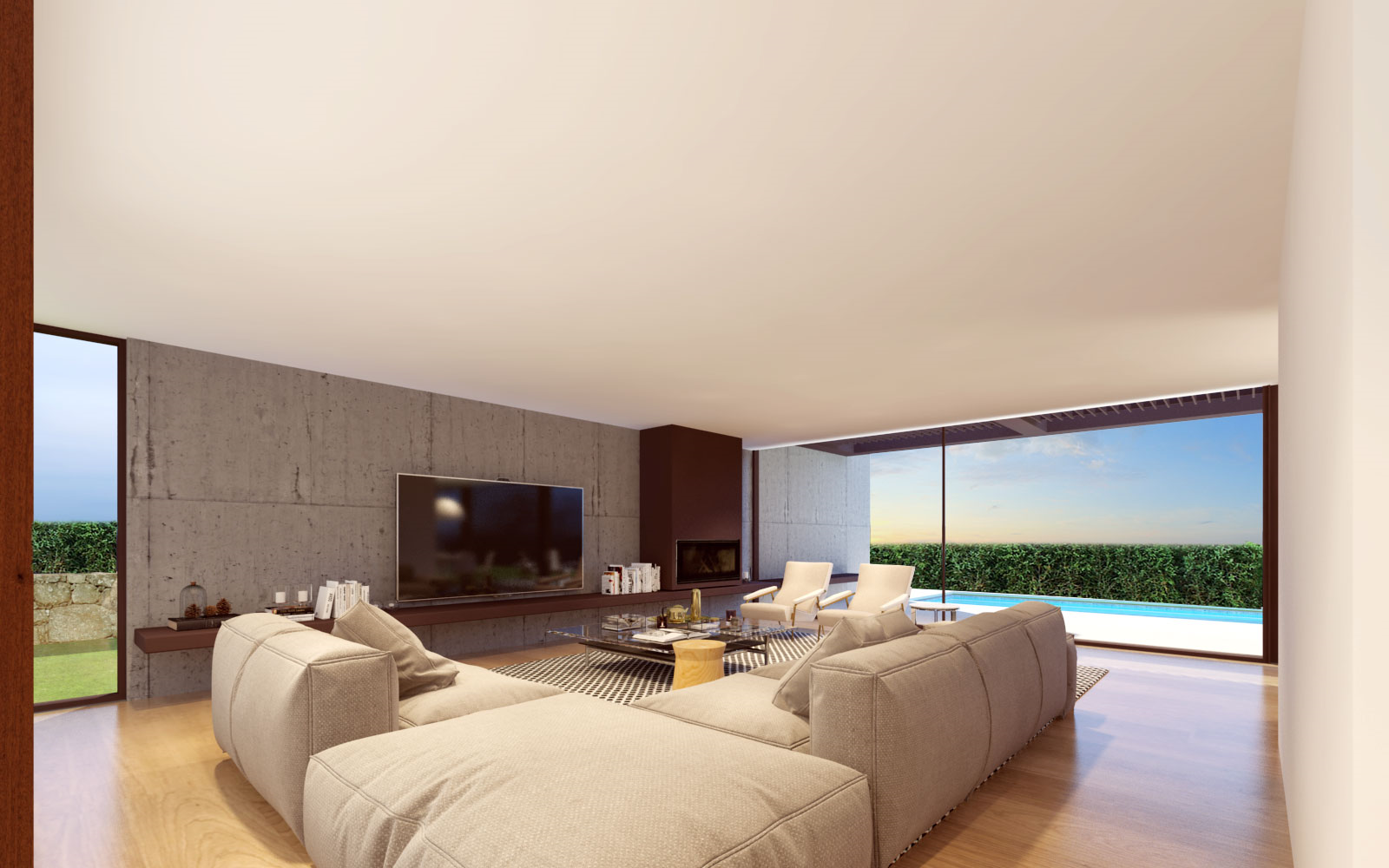





The discussion on ductwork noise transmission from Acoustic Fields highlights crucial aspects of HVAC system acoustics. The movement of air…
Great build plans. thank you Denis
You must use absorption. Never place a chair against a wall.
A friend and I built several diffusors using these plans and they turned out absolutely beautiful. Very good instructions and…